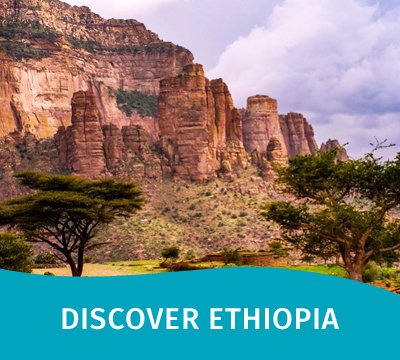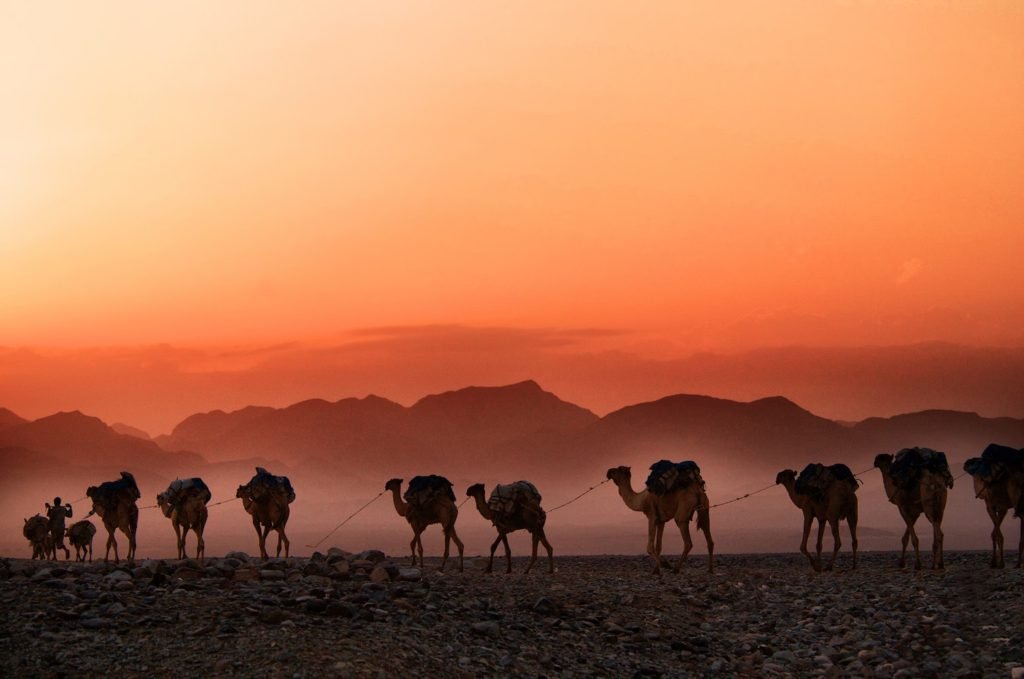Ethiopia

Ethiopia is the oldest independent country in Africa and the second most populous after Nigeria. It is a country with rich cultures and traditions that existed intact for thousands of years.

Ethiopia is located in North East Africa and shares borders with Kenya, Somalia, Sudan, Eritrea, and Djibouti. The country has a population of over 100 million of which 70% are under the age of 30.
Ethiopia lies completely within the tropical latitudes, therefore most regions in the country enjoy average temperatures of around 22 celsius throughout the year. Temperatures could climb up to 50 degree in places like the Danakil Desert which is the hottest place on earth.
The major languages spoken are Amharic, Afan Oromo, Tigrinya, and Somali. Most people can also speak English in cities and towns. Islam and Christianity can be considered as the major religions found within the country.
History
Ethiopia is one of the oldest countries in Africa and the only one that was never colonised. It has a very rich history dating back thousands of years.
The first known kingdom of Ethiopia rose back in 100AD and was known as the Kingdom of Axum. It centered in northern Ethiopia and ruled as far as Somalia, Djibouti, Sudan, Egypt, Yemen and Saudi Arabia.
In the year of 642, Arabs conquered Egypt and took complete control over the northern region of Africa making Islam the dominant religion of the region. However, Ethiopia remained as a Christian country.
In early 19th Century, the Europeans were able to divide Africa between them. In 1935, Italy invaded Ethiopia helped with heavy weapons, including poisonous gas. However, Ethiopian guerrilla fighters didn’t make it easy and as the result the Italians fled the country after five years.
During the 21st Century, Ethiopia was able to experience rapid economic growth. Even though Ethiopia remains as a developing country, it is able to keep high hopes as the nation’s economy is growing rapidly and is one of the fastest in the world.
Demographics
Ethiopia is a country with a highly diverse population. It ranks among the top 10 countries in the world on population growth. If this continues, the population is expected to reach over 200 million by the end of the year 2050.
There are over 80 different ethnic groups in Ethiopia. Out of these, Oromo is the largest. Around 35 percent of the country’s population belong to this ethnic group. The second largest ethnic group is Amhara, which accounts to 27 percent of people in Ethiopia.
The majority of the population in Ethiopia is made up of Afro-Asiatic speaking communities. The Semitic people who belong into this category are known as Habesha people.
Ethiopia hosts one of the largest number of refugees and displaced people. According to a recent census, over a million refugees reside in Ethiopia. Most of the refugees have migrated from Somalia, Eritrea and South Sudan.
Languages
There are over 90 different Ethiopian languages spoken today. However, only a handful number of languages are widely spoken around the country. The most popular and working language is Amharic and is spoken by over 30 million people.
Afan Oromo is the second largest language and around 34% of the Ethiopian population speaks it. Around 7% of the Ethiopian population speak Somali and 4% Tigrigna.
English is the most popular foreign language spoken by most people in cities and towns. It is also used for education in secondary schools and colleges. Primary education is taught in local languages in all regions of the country.
All regions use their own language as their working language. This provides extra convenience to the people who live in those regions.
Culture
Ethiopia is a country with several unique cultures and traditions. Ethiopians take pride in their cultures shown by the way they dress, greet each other and lead their daily life.
Although the country has diverse and mult-ethnic population, people in the country live in harmony and great tolerance.
Religion and family play a high importance in the lives of Ethiopians.
Each ethnic group in the country have their own unique cultures and traditions that make Ethiopia a very diverse country.
Tourism
In the last decade, Ethiopia has become a major tourist destination in Africa. Tourists travel to this old nation from all around the world. Most tourist attractions are centered in the northern part of the country and in Addis Ababa, which is the capital city of the country.
The country’s infrastructure is developing rapidly making traveling within the country effortless. Since 2013, the government of Ethiopia has been investing on roads and public facilities to capitalise on the revenue from tourism.
Addis Ababa is one of the major tourist destination in Ethiopia. The capital city is one of the most popular in the region and is home to the African Union.
The city has plenty to offer from beautiful cathedrals and churches to historical monuments and famous open markets. The city also has several museums including the one that holds the oldest humanoid in the world.
The capital also has an excellent nightlife and is a great destination for foodies. Addis is a city filled with great people, and one of the safest cities in the world.
Visit the About Ethiopia site to discover more about this great country, the Ethiopian people, history, culture and more.
